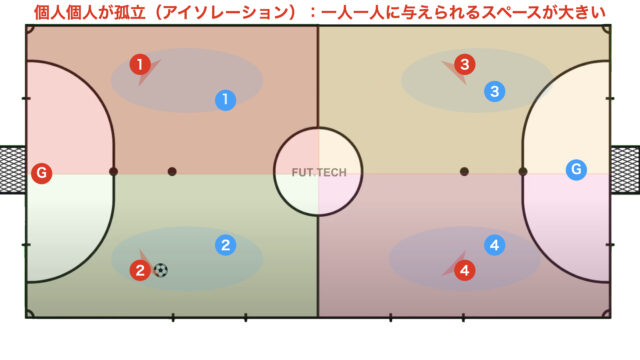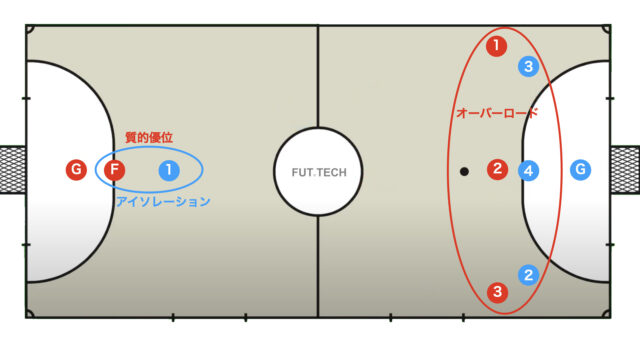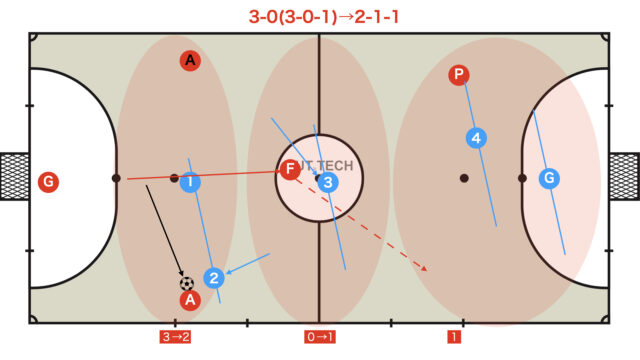What is the key factor when considering the 3-1 tactic?
The answer is “formation and rotation“.
This article provides an easy-to-understand explanation—with diagrams and videos—of the overall concepts of the 3-1 tactic and rotation, and even covers a formation change into a slightly advanced alternative setup.
Formation
Three Lanes and Depth
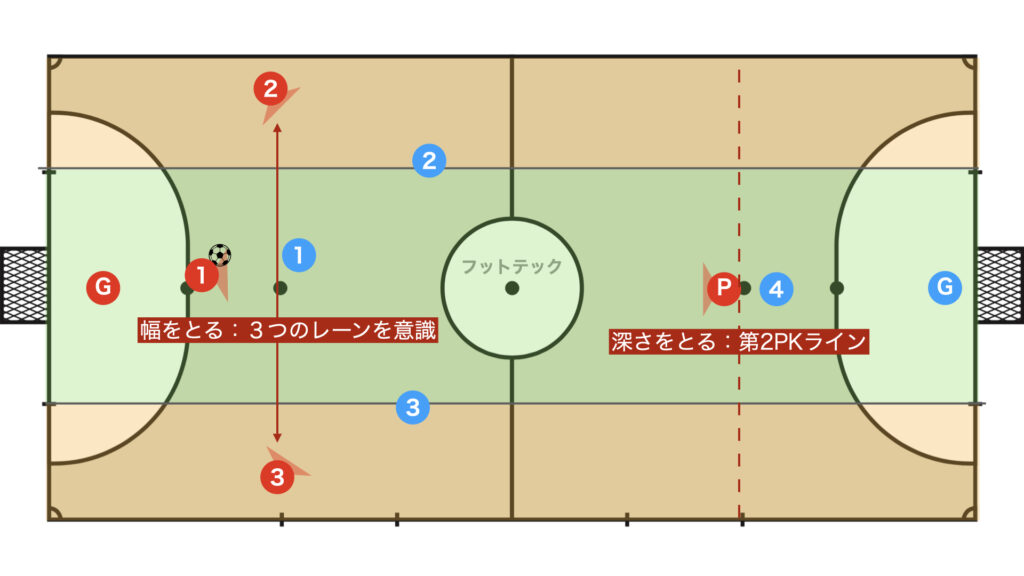
To maximize the use of the futsal court and utilize space efficiently, the following two points are extremely important.
- The three players in the back should be positioned one in each of the three lanes.
- The pivo should take up depth up to the 2nd PK line.
In every 3-1 tactic, if the formation (floor balance) breaks down, it is crucial to revert to the original formation to restore balance.
False Pivo
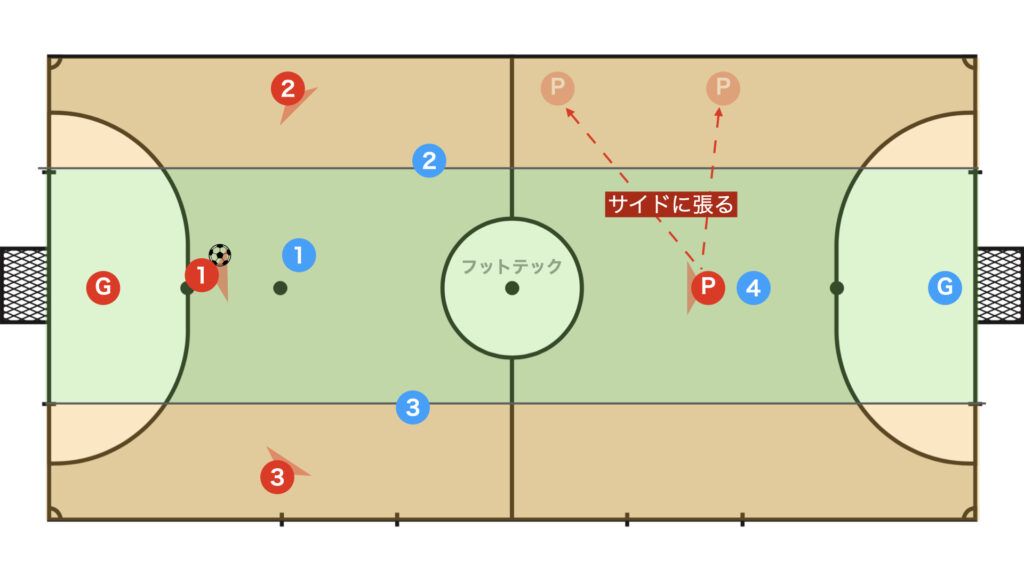
While the original purpose of the pivo is to initiate play in the front, a pivo that drifts to the side to open up space—assuming a role different from its intended purpose—is called a false pivo.
Rotation
Eight
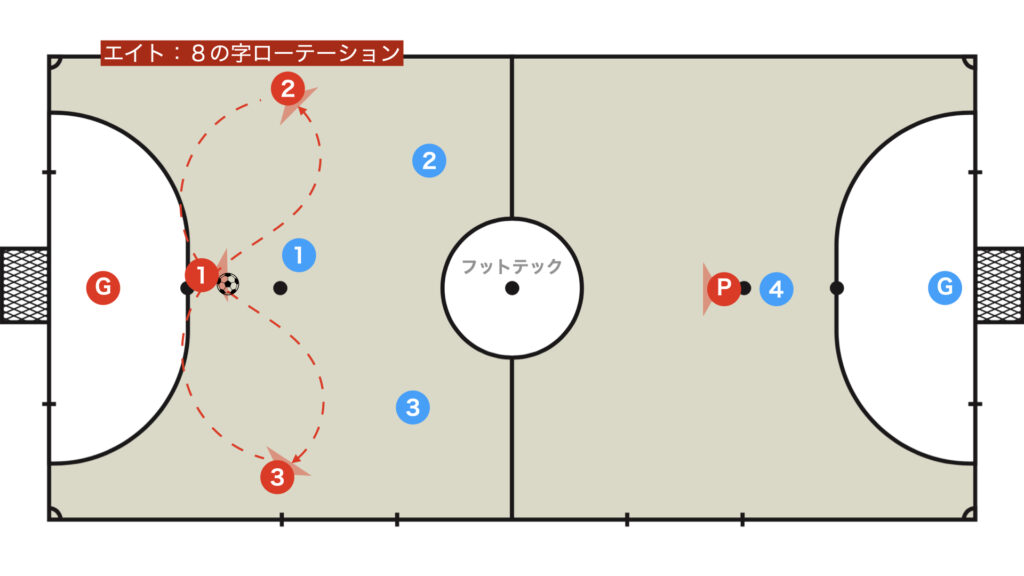
This is the rotation that beginners most commonly adopt when starting with the 3-1 tactic.
Because it supports the ball holder closely, it is simple and easy to understand; however, with fewer attacking patterns, it tends to be easily read by the opponent’s defense.
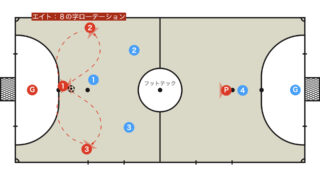
Rotation (Hedondo)
A tactic effective against defenses that construct multiple lines.
By having a player move from the side lane to the center lane, entering from a blind spot, it creates confusion in the opponent’s defense.
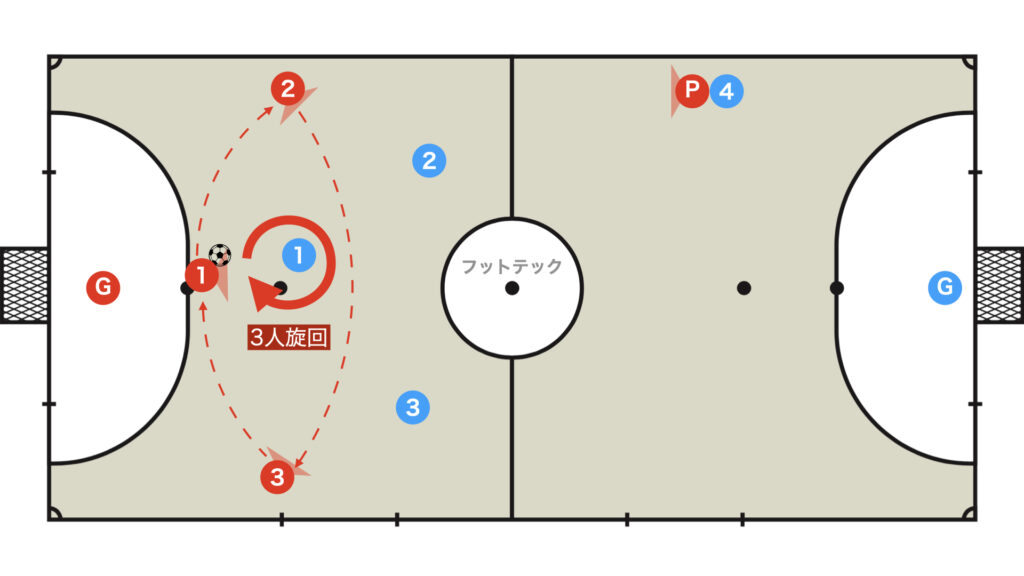
It is a tactic that is like a blend of Quattro and 3-1.
It is often used as an introduction to Quattro.

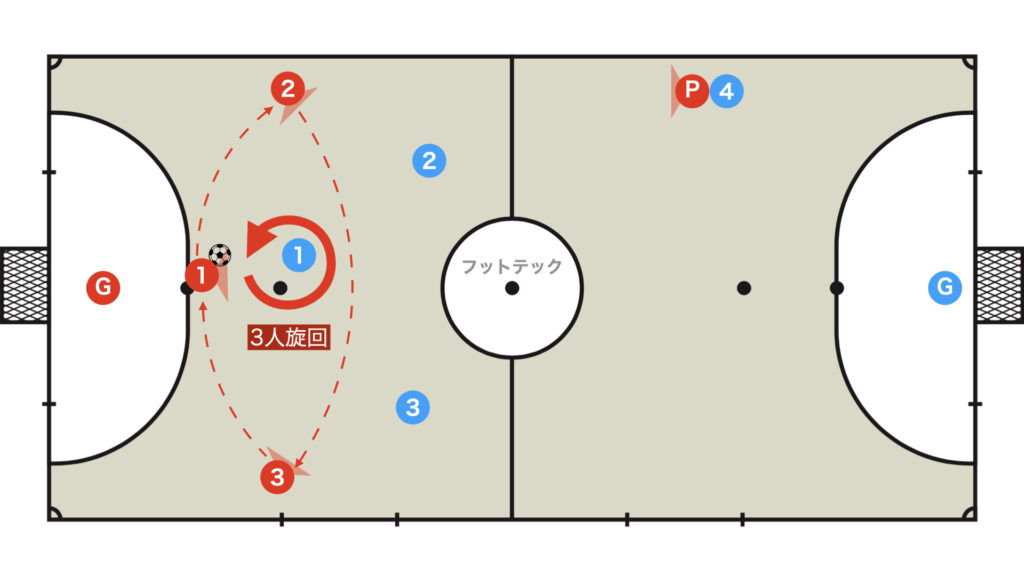
It is the reverse rotation of the earlier mentioned rotation.
It is a widely used and well-known play model around the world.
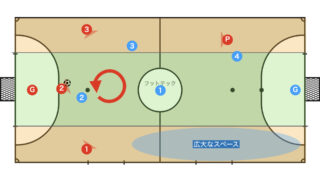
Switching Between Pivo and Fixo
If there are two or more players capable of playing as pivo, intentionally swapping the back player with the pivo is an effective tactic.
Switching in the Center Lane
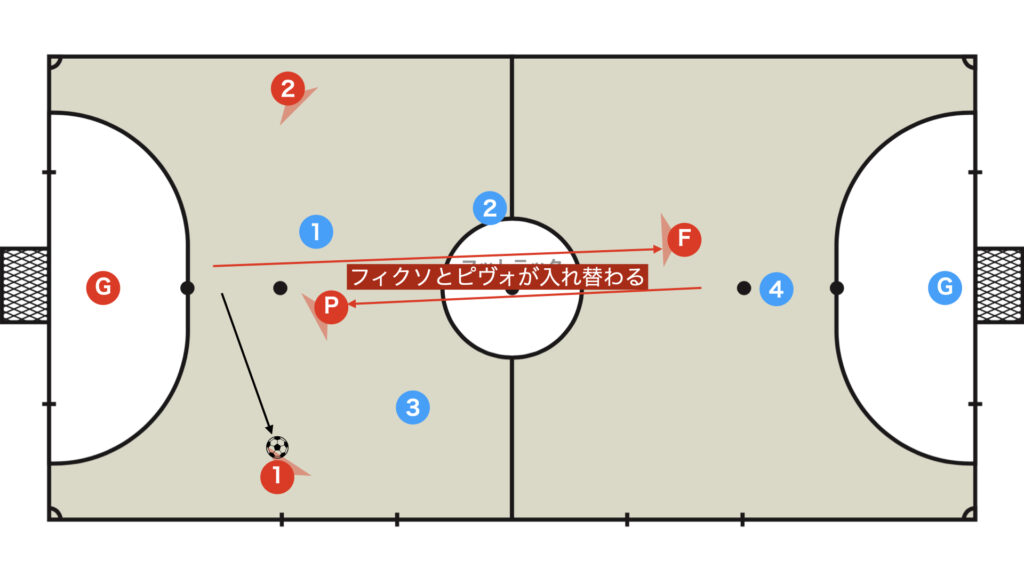
Switching between fixo and pivo in the center induces a marking exchange, giving the pivo—who drops out from the blind spot—the advantage of momentary freedom.
Diagonal Breakthrough and Opposite-Side Drop
When breaking through using Diagonal, if the pivo drops out from the opposite side, it allows for rotation while neatly maintaining the 3-1 formation.
Formation Change
By employing movements like breakthroughs and line cuts, teams can mix the 3-1 with various other formations to bewilder the opposing defense.
Since a change in formation necessitates adjustments in defensive responses each time, it often creates hesitation.
3-1→2-2
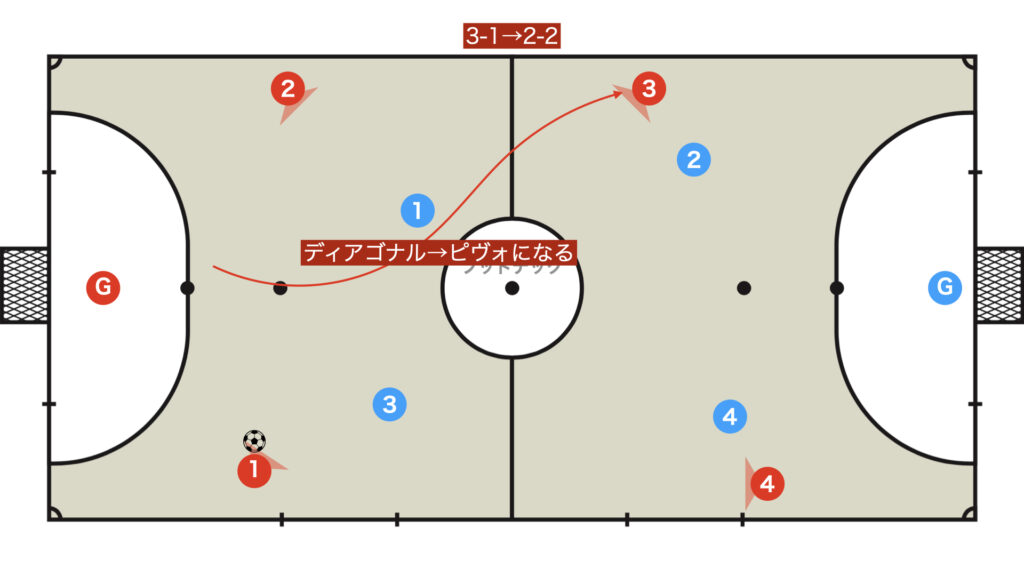
If the back player (fixo) steps out and does not immediately drop back, the formation can shift into a 2-2 setup.
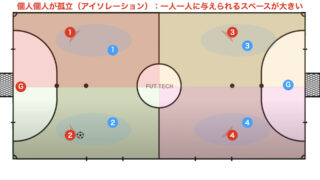
3-1⇔4-0
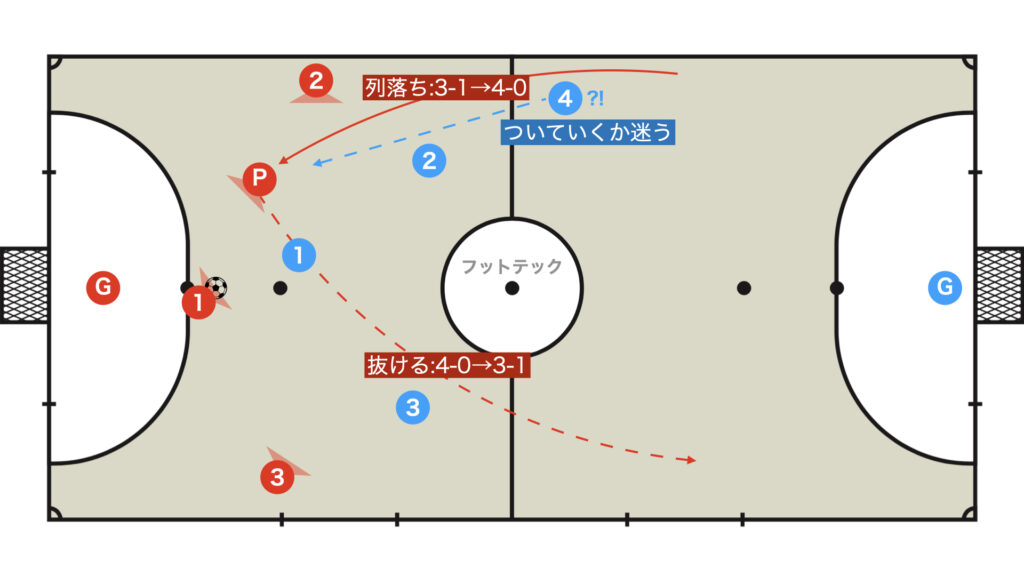
It is common to see European teams that utilize a combination of 3-1 and 4-0, employing line cuts.
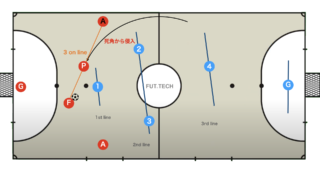
2-1-1→3-1
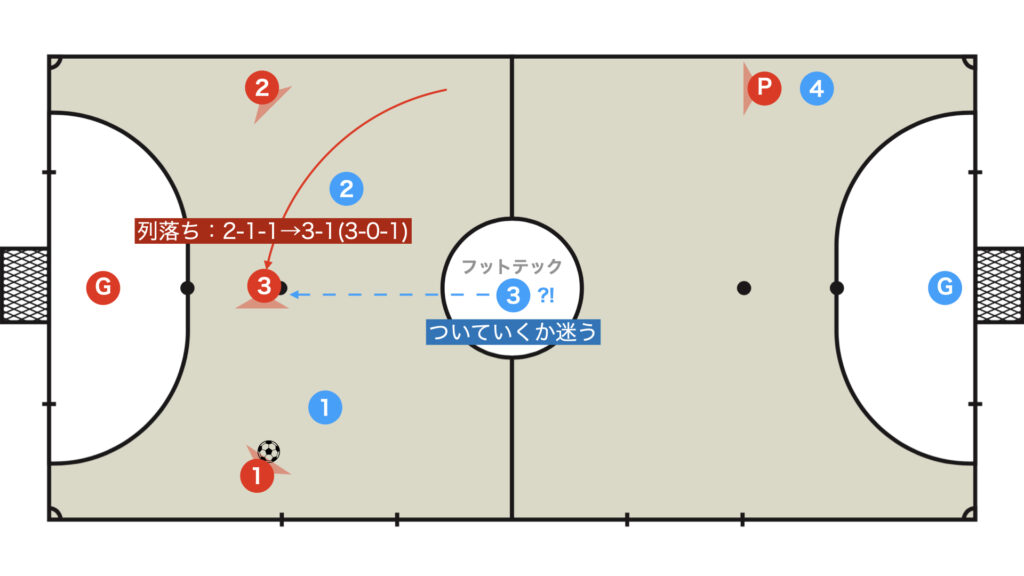
The tactic was primarily used by Schlaiker Osaka when they won the title.
Summary
How was it?
Positional attack is very deep and includes a variety of tactics; however, we recommend focusing on mastering just one first.
For players, it is sufficient to just understand your own team’s play model; however, by systematically learning various tactics, scouting opposing teams becomes easier, and watching matches—such as those in the F-League—becomes more enjoyable.
So, be sure to learn not only one tactic but a variety of them systematically!
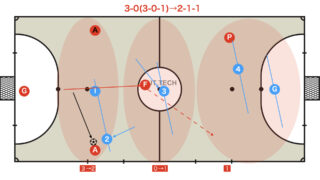
Thank you very much for reading this article to the end.
If you found this article useful, please consider sharing it using the social media share buttons above.
We regularly share valuable insights on futsal tactics on Twitter, so if you haven’t followed us yet, we’d appreciate your support!
We are committed to raising the level of futsal in Japan by sharing high-quality information through discussions with individuals who have coaching experience in the F.League and overseas.
If you have any questions or notice any mistakes, feel free to leave a comment below.
We update our articles regularly, so if you’d like to keep reading, please bookmark our site or search for “FutTech”!
